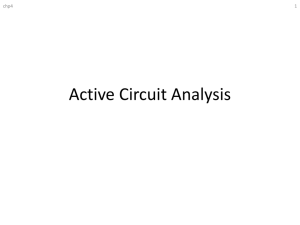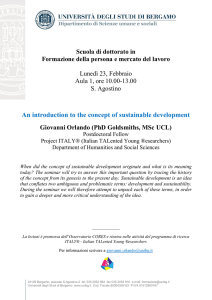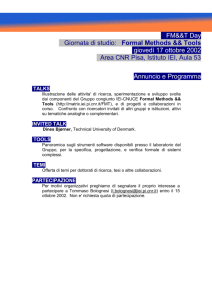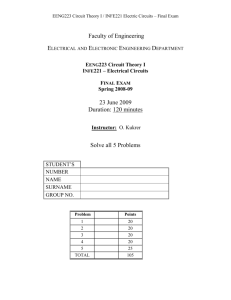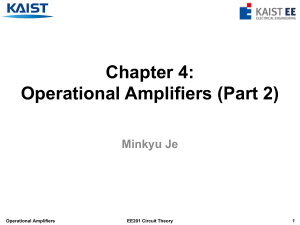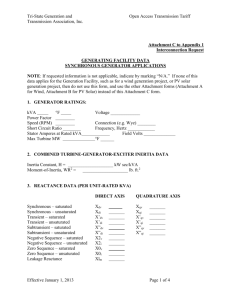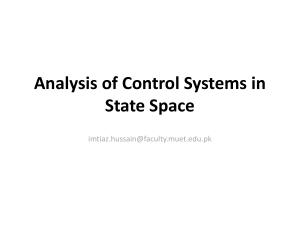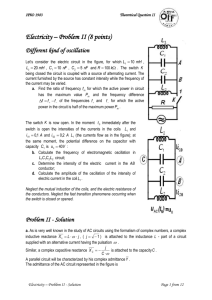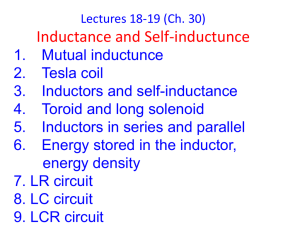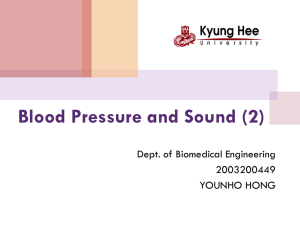System Design Presentation
advertisement
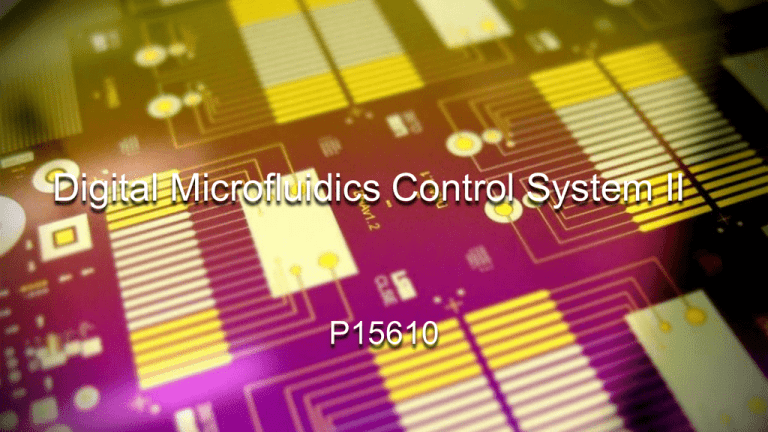
Digital Microfluidics Control System II P15610 Agenda ● Review o Problem Statement o Customer Requirements o Engineering Requirements o Risk Assessment ● Market Comparison ● Functional Decomposition ● Morphological Chart ● Concept Selection ● System Architecture ● Feasibility Analysis ● Project Plan Problem Statement Current state - The current control system is not self contained and uses a class AB amplifier which makes the system large and nonmodular. Desired state - A fully enclosed control system that efficiently operates the DMF chip while providing accurate feedback. Project Goals - Make key improvements to functionality of control system, and complete all assigned deliverables. ● ● Repeatable, consistent droplet motion. Durable, lightweight, modular design. Constraints - Use provided DMF chip, control fluid droplets using electrowetting, use DI water as test fluid, ensure compatibility with peripheral hardware and GUI. Customer Requirements Engineering Requirements Risk Assessment Market Comparison Parameters DropBot NeoPREP Capacitance Precision ~5pF Not Specified Droplet Speed Range 0-70mm/s Not Specified Impedance Precision Not Specified Not Specified $1500 $150,000 Portability Contained Not Portable Size 1’x1.5’x1’ 5’x5’x5’ Cost Market Comparison DropBot NeoPREP Sandia Digital Microfluidics Hub Functional Decomposition Morphological Chart Concept Selection Oscillator and Demultiplexer Temperature range: -10C to 60C Cost: $1.00 each Frequency: 100 kHz+ Size: Diminutive Concept Selection Miniature Circuit Breaker Trip conditions: 5A; 240V Cost: $18.00 Size: Deck of cards+ Concept Selection Server Rack Weight: 2.4 lbs Cost: $60.00 Size: ~Toaster oven Concept Selection Mechanical Heat Sink With Fans Airflow (HS/fan): 55/30 ft3 /min Cost (HS/fan): $45.00/$4.00 Weight (HS/fan): 1.4 lbs/<1 lbs Size (both): Deck of cards + System Architecture Feasibility Analysis Capacitive Measurements Capacitive sensor circuit ● Circuit should be able to measure 0.01pF change in capacitance ● Sampling Frequency = 4MHz ● Requires a comparator ● Inexpensive (~$3.00) Example Circuit Feasibility Analysis - Amplifier Amplifier Requirements Input AC Voltage ~117 V Input AC freq. 60 Hz Peak Output Voltage 170 Vrms Capacitive Load 10 nF Cut off frequency 100 kHz Voltage gain ~48 dB Input Resistance 20 kΩ Ambient Temp. 25 C - Requirements are based off the amplifier used in the previous project. - The current design will use two cascaded common emitter BJTs with a crystal oscillator providing a frequency of 100kHz. Feasibility Analysis - Cost Electrical Components Cost (USD) Control Board $20.00 I/O Board $50.00 Arduino Mega $25.99 Crystal Oscillator $1.00 Amplifier $250.00 Mini Circuit Breaker $5.00 Mechanical Components Cost (USD) Server Rack $200.00 Fan + Heatsink $60.00 - Rough estimate of Total Cost ~ $600 - Assigned budget is $2000 Feasibility Analysis - Weight Engineering Requirement: <13,600 g Engineering Analysis to be Completed Electrical - Component Tolerances - Noise Analysis - Power Consumption - Speed of computation Mechanical - Structural - Shock & Vibration - Heat Project Plan Questions?
